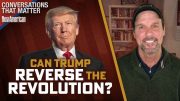
Those groups include such broadly focused entities as Focus on the Family (FOTF), the U.S. Conference of Catholic Bishops, People for the American Way, the American Israel Public Affairs Committee, and the Family Research Council, as well as such special interest organizations as the American Life League, the National Right to Life Committee, Bread for the World, the Home School Legal Defense Association (HSLDA), and the National Organization for Marriage.
According to the Pew study, the number of groups “engaged in religious lobbying or religion-related advocacy in Washington, D.C., has increased roughly fivefold in the past four decades, from fewer than 40 in 1970 to more than 200 today.” The total of 212 organizations analyzed by Pew collectively employ at least 1,000 staff members and spend more than $390 million annually to influence Congress and other Beltway movers and shakers on some 300 policy issues. “Religious advocacy is now a permanent and sizable feature of the Washington scene,” said Allen Hertzke, a political scientist at the University of Oklahoma and lead author of the report.
The Pew report noted that for “most of the past century, religious advocacy groups in Washington focused mainly on domestic affairs. Today, however, roughly as many groups work only on international issues as work only on domestic issues, and nearly two-thirds of the groups work on both.”
The study found that Catholics and evangelicals are the most heavily represented among religious groups (19 percent and 18 percent respectively), while Jewish interest groups make up about 18 percent of the organizations, followed by mainline Protestant organizations at 8 percent. In total, Christian advocacy groups make up 58 percent (224 organizations) in the Pew study.
In addition, “smaller U.S. religious groups, including Baha’is, Buddhists, Hindus, Muslims, and Sikhs, also have established advocacy organizations in the Washington area,” reported Pew. “In fact, the number of Muslim groups (17) is about the same as the number of mainline Protestant groups (16).”
Significantly, noted the report, “the largest category today is interreligious: One-quarter of the groups studied (54) either represent multiple faiths or advocate on religious issues without representing a specific religion.”
The top five groups in terms of annual budget are: 1) the American Israel Public Affairs Committee, $87,899,089; the U.S. Conference of Catholic Bishops, $26,662,111; the Family Research Council, $14,259,622; the American Jewish Committee, $13,362,000; and Concerned Women for America, $12,556,658.
These multi-million-dollar budgets are the exception rather than the rule, however, with many of the religious advocacy groups operating on a relative shoestring compared to the fat wallets of the average lobbyist in Washington. In fact, among the 131 groups for which financial information was available, the median annual budget was about $1 million, with some groups subsisting on as little a $6,130 (the Institutional Religious Freedom Alliance) and $9,655 (Lutheran World Relief).
Of course, while the increase in religious and values advocacy over the last several decades is impressive, it is still dwarfed by the nearly unlimited number of high-powered business and moneyed special-interest lobbying groups that wield significant political muscle inside the Beltway. “Some longtime Hill advocates highlighted the report’s finding that the vast majority of religious advocates stick to softer education-type outreach and don’t get into explicit politics, such as donating money to candidates,” noted the Washington Post of the Pew findings. “Others said the report showed how tiny the field is, compared with the tens of thousands of mostly corporate lobbyists that have ballooned in number in Washington.”
John Carr of the U.S. Conference of Catholic Bishops, the second-largest spender among all religious groups, put the clout of groups like his in its proper DC perspective. “No one is going on a golfing vacation in Scotland with us,” Carr told the Washington Post. “Washington is awash with money, and it’s harder to break through.”
The Post noted that the “work of religious advocates mirrors the issues that come and go in public life. Early groups focused on trying to ban alcohol and funding for Native American schools. Different issues rose and fell, as did organizations.”
A noteworthy casualty of the changing complexion of faith-based lobbying is the Moral Majority, once the major face of the Christian Right with millions of members and an impressive budget with which to advocate for issues dear to the hearts of evangelical Christians. But with the rise of Ronald Reagan and a sense among its constituents that the battle for Christian values was well in hand, the Moral Majority’s influence waned and it closed up shop in 1989, with founder Jerry Falwell trying to put a good face on the decline, declaring: “Our goal has been achieved…. The religious right is solidly in place and … religious conservatives in America are now in for the duration.”
In the ensuing years, with the surge of homosexual activism, the push for abortion rights, and a general sense that traditional family values are under increased attack, the efforts of the Moral Majority and the Christian Coalition have been replaced by such issues-driven organizations as the Family Research Council, FOTF’s Citizen Link, and Concerned Women for America, along with single-issue organizations like National Right to Life, the Home School Legal Defense Association, and the National Organization for Marriage.
While there is a tendency among Beltway insiders to minimize the impact of such groups on national policy, their presence in the debate — as well as the influence they have exerted on mainly Republican leadership — make their presence difficult for liberal lawmakers and lobbyists to ignore. “I think there is a grudging respect for consistency, even with people who disagree with us,” Carr told the Post. “But the reality is, our priorities are not Washington’s. This is a mission, not a job.”



